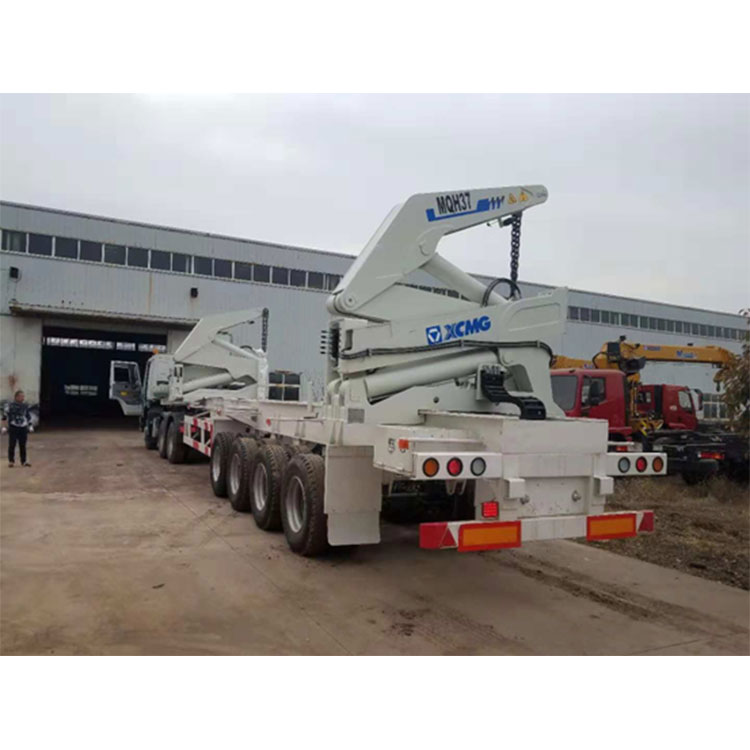 English
English Español
Español  Português
Português  русский
русский  Français
Français  日本語
日本語  Deutsch
Deutsch  tiếng Việt
tiếng Việt  Italiano
Italiano  Nederlands
Nederlands  ภาษาไทย
ภาษาไทย  Polski
Polski  한국어
한국어  Svenska
Svenska  magyar
magyar  Malay
Malay  বাংলা ভাষার
বাংলা ভাষার  Dansk
Dansk  Suomi
Suomi  हिन्दी
हिन्दी  Pilipino
Pilipino  Türkçe
Türkçe  Gaeilge
Gaeilge  العربية
العربية  Indonesia
Indonesia  Norsk
Norsk  تمل
تمل  český
český  ελληνικά
ελληνικά  український
український  Javanese
Javanese  فارسی
فارسی  தமிழ்
தமிழ்  తెలుగు
తెలుగు  नेपाली
नेपाली  Burmese
Burmese  български
български  ລາວ
ລາວ  Latine
Latine  Қазақша
Қазақша  Euskal
Euskal  Azərbaycan
Azərbaycan  Slovenský jazyk
Slovenský jazyk  Македонски
Македонски  Lietuvos
Lietuvos  Eesti Keel
Eesti Keel  Română
Română  Slovenski
Slovenski  मराठी
मराठी  Srpski језик
Srpski језик
What are the hydraulic oil change intervals and cleanliness standards for a Four Axle Side Lifter Crane Semi Trailer with Engine?
2025-08-25
As a mobile work machine integrating a complex hydraulic system with a heavy-duty load platform, the maintenance of its hydraulic oil is crucial. Hydraulic oil change intervals for this type of equipment are generally recommended according to the manufacturer's manual, but generally follow a rule of thumb of every 500 hours of operation or annually. The actual interval should be adjusted based on specific operating conditions. For example, when operating in harsh environments such as continuous high-intensity lifting, dusty conditions, or high temperatures, the change interval should be shortened to 400 hours or even less. Additionally, every time the hydraulic oil is changed, it is important to thoroughly drain the old oil and clean the oil tank and filter installation area to ensure that the new oil is pure. Mixing different brands or models of hydraulic oil is strictly prohibited to prevent oil degradation and accelerated wear of critical hydraulic components.
Maintaining extremely high oil cleanliness standards is key to maintaining a secure hydraulic system. For Four Axle Side Lifter Crane Semi Trailer with Engine (FSL) systems used for load-bearing lifting operations, the hydraulic fluid cleanliness level is generally required to meet NAS 1638 standards, Class 7 or 8. For servo valve or proportional valve systems requiring extremely precise control, the cleanliness level must reach Class 6 or higher. This means that the number of particles larger than 5 and 15 microns in the oil must be strictly controlled to prevent abnormal wear, seizure, or failure of precision hydraulic cylinders, valve blocks, and pumps. Achieving this standard relies on using fresh oil that meets high cleanliness requirements; regularly monitoring oil samples with specialized oil testing equipment; and strictly adhering to a filter replacement schedule (suction, return, and pressure), typically halfway through the oil change interval or as prompted by the differential pressure indicator.
Proactive management of hydraulic fluid condition is essential to ensure stable and efficient operation of the FSL and extend the life of its core hydraulic components. In addition to adhering to strict replacement cycles, the hydraulic oil's physical condition (color, odor, presence of emulsification, foaming) and oil level must be closely monitored daily. Any abnormal changes indicate the need for inspection or premature replacement. Ultimately, making informed decisions based on regular professional oil cleanliness testing reports is key to maintenance. These reports accurately reflect the oil's true condition and internal system wear, providing a direct basis for optimizing maintenance strategies. Only by combining periodic replacement with standard cleanliness can this heavy-duty equipment, which combines lifting and transport functions, achieve its expected performance and reliability.





